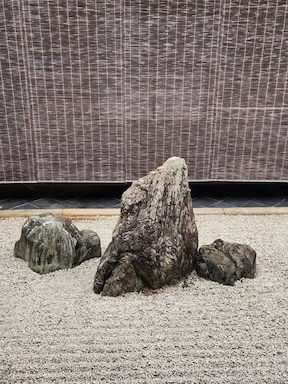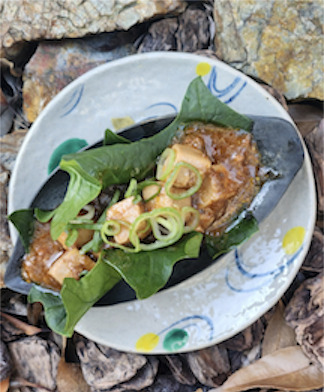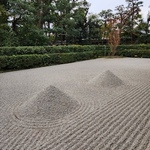Longtime UNS Member, Sharon Meyers, is currently living in Japan for several months. This is a glimpse into her world and journey.
Rock, stone, harmony
changing seasons, reflection
life’s impermanence
The serene beauty of Zen gardens, so easy to explore in Kyoto, continues to inspire. Defined by design for meditation, inner exploration and spirituality, Zen gardens are special. Minimalism is key, highlighting simplicity of just a few elements of nature, balance through carefully considered placement of select rocks and stones, and harmony between the garden and surroundings. Called karesansui/ dry gardens, they often lack all forms of vegetation, to symbolize a state of calm, devoid of unnecessary thoughts.
Mindful of this centuries old Buddhist tradition, I make sure to experience a Zen garden each week while living and learning here. Daisen-in Temple is one of the top five most important Zen temples in Kyoto and one of my favorites. Nestled in Kyoto’s scenic mountain landscape, it stands as a serene testament to Japanese Zen Buddhism. Its garden is considered a remarkable expression of the spirit of Zen, designed in 1509 by a Zen Abbot. I find this particular garden a visual delight, while also a place of profound stillness and reflection. Why? The garden represents the journey through life!
As I enter a miniature landscape of rocks, suggesting a waterfall (birth), I note the narrow width of this initial stretch of garden – only 12 feet. It widens into deeply raked white stones representing a river (youth) that is strewn with rocks, symbolizing hardship and obstacles. The river splits into two branches. One “flows” into a “Middle Sea” of raked stones and rocks (maturity). The other flows through a gate to a large “Ocean” of two cone shaped hills, suggesting mountains and the search for wisdom and old age – serene and free of distraction. The ocean is the end of the voyage, the return to the eternal at the end of life.
I reflect and review the flowing water of my birth, river of youth, challenges along the journey and life experience of this time, all through witnessing this masterful garden. When you think of your own life journey, what metaphorical image comes to mind? What Zen inspired space of quiet reflection can you create?
Arigato,
Sharon
Weekly Recipe
While mapo tofu is a dish favored in autumn in Japan, its origins are Chinese. In the last two weeks I have enjoyed varied local – and quite spicy – mapo tofu dishes on the islands of Singapore and Penang, Malaysia. This Japanese version offers a more subtle blend of spicy, salty and umami tastes and takes only a few minutes to prepare.
Mapo Tofu
Serves 2
Ingredients:
1 T toasted sesame oil
1" fresh ginger, minced finely
2 cloves garlic, minced finely
1 T chili paste (can find in Asian grocers and Trader Joe’s)
1 package tofu, medium firm, cut into 1" cubes
1 tsp each soy sauce (or coconut aminos for GF), sugar and ground Sichuan pepper
1.5 T cornstarch
1 green onion, sliced thinly (both green and white parts)
To Make:
-Heat oil in sauté pan ’til sizzling, then add ginger and garlic, medium heat, until fragrant
-Add chili paste and stir to blend well, then tofu; stir gently to coat evenly for just a moment
-Add 3/4 cup water; simmer for 2 to 3 minutes
-Add soy sauce, sugar and pepper; then whisk in the cornstarch and simmer for another two minutes; stir gently while mixture is simmering
-Ladle into two bowls and garnish with green onion







